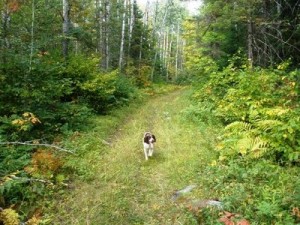Frost seeding food plots
Frost seeding food plots
Frost Seeding
The act of frost seeding is to broadcast seeds on top of exposed soil in late winter or early spring, when temps are dropping below freezing at night and thawing during the day. With each freeze, the ground expands, only to contract when it thaws. The processes of expanding and contracting soil draws the seed into the earth, creating good seed to soil contact.
Clovers are the most common candidate for frost seeding, but it will also work very well with most brassicas and grasses, such as switch grass. It works with alfalfa, but that comes with a higher risk of the seeds germinating and experiencing a killing frost. Seeds should generally be applied at 125%-150% of the suggested planting rate, due to lower germination and establishment rates.
Frost seeding is best timed for when one has good odds of a week or two of freezing nights and thawing days before temps remain above freezing. Seeding over a couple inches of snow or a seeded plot getting snowed on aren’t problematic issues.
It is best performed on relatively level ground, as a swift snow melt or heavy rains creating runoff can cause the seeds to be swept away, often resulting in very uneven growth.
Disadvantages
Generally must apply 25-50% more seed to achieve the same stand density as a conventionally planted food plot.
It will not work well, if at all with many traditional food plot plantings, such as corn and soybeans, and is risky with alfalfa
It will not work as well in areas with a surplus of ground debris, such as untilled CRP grounds or areas with a surplus of ground leaf cover.
It does not allow for working lime and fertilizers into the soil at planting time
Frost seeding food plots
Advantages
Removes the need to cultipack or drag
Soil doesn’t need to be worked up, saving money, avoiding bringing dormant weed seeds to the surface and allowing the soil to better retain its built up moisture content.
Planting gets a head start on weed growth
Seedlings receive the full benefits from spring rains
The plot is established as early in the spring as practically possible, often allowing the plot to produce more tonnage and better establish the plants’ root systems before potential summer droughts
Frost seeding food plots
Advantages
Removes the need to cultipack or drag
Soil doesn’t need to be worked up, saving money, avoiding bringing dormant weed seeds to the surface and allowing the soil to better retain its built up moisture content.
Planting gets a head start on weed growth
Seedlings receive the full benefits from spring rains
The plot is established as early in the spring as practically possible, often allowing the plot to produce more tonnage and better establish the plants’ root systems before potential summer droughts


